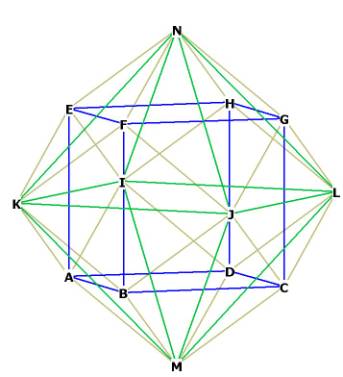|
(2017
premidterm assignment) Model Student Midterm answers 2017 (Index) Essay 1: Compare, contrast, and evaluate Narratives of the Future |
 |
Tanner House
10/12/17
Comparative Futures
When
discussing the “literature of the future”, it is absolutely necessary to
acknowledge the fears, concerns, and anxieties of both the past and present.
Without the context of where we are and where we have been, speculating about
the future of humanity becomes a pointless exercise in futility, grounded in
nothing but the fantastical. Former student Tom Britt’s 2016 pre midterm essay
“A Gift to the Dead and a Warning to the Living” affirms this notion of the
necessity of the literature of the future to be grounded in the context of both
the past and present. Necessities, however, can be problematic, as the idea that
literature MUST contain something seems to limit the very scope of literature.
If topics must be covered, and universals are established, then visions can be
compromised. Literature of the future addresses this concern in the form of
multiple distinct, concurrent narratives: the creation/apocalypse narrative, the
evolution narrative, and the alternative future narrative. These narratives are
all concerned with similar issues, but they take different approaches to said
issues, creating a discourse in which we can discuss the future through a
variety of different, but equally valid, interpretive lenses.
The creation/apocalypse narrative and the evolution narrative are the two visions of the future which are most directly concerned with the issues of the past and present. Creation narratives, by their very definition, have to consider the context of humanity’s past. If we wish to explore where we came from, we must acknowledge where we have actually been. One of the biggest themes in creation/apocalypse narratives is the concept of revelation, or the idea of some sort of ultimate understanding divined through the intervention of the supernatural. This concept is fully on display in the scriptural texts covered in the course. Genesis and Revelation (particularly Revelation) are the word of God himself, and offer a vision of humanity’s beginning and end. Many of the themes present in these scriptural texts are reflected in Octavia Butler’s Parable of the Sower. These narratives are valid, but they are lacking in empirical evidence, leading to subjective interpretations which can weaken the strength of their arguments.
On
the other hand, evolutionary narratives are often directly concerned with the
empirical. Evolutionary narratives have their own sort of revelations, but they
are divined not through the supernatural but the empirical. Their claims are
based on observation, and assert that the story of creation, and destruction,
resemble structure like circles and spirals. According to the evolutionary
narrative, humanity’s beginning, and its demise, can be traced through objective
and empirical evidence. The final narrative we have covered in the course, the
alternative future narrative, takes ideas and concepts from the other two to
create a sort of far more flexible hybrid narrative. Alternative future
narratives combine the empirical and supernatural in order to form a
better-rounded and complete vision of the future.
 |
 |
 |
